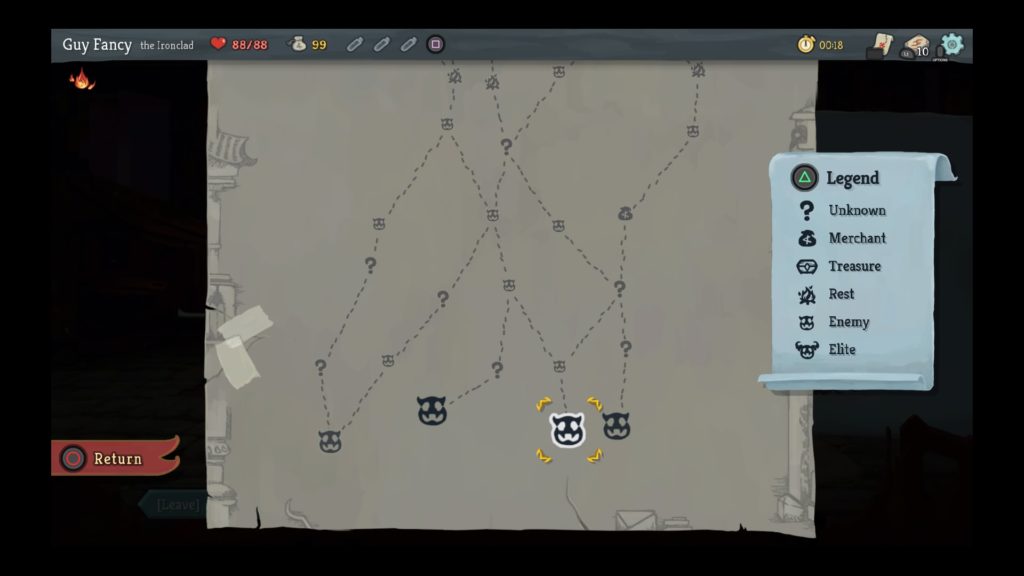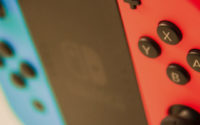Review: Slay the Spire (aka Why I Just Can’t Quit You)
I’ve tried a bunch of deck-building games (video and board games), but I’ve never found one that I really enjoyed. Then along came Slay the Spire. and… nothing changed.

I played Slay the Spire on Switch right after its release, and I was terrible at it. I barely made it a few rooms up the aforementioned spire before dying. This pattern repeated over and over, which leads to the chicken-vs-egg question:
Am I bad at these games because I don’t enjoy them or do I not enjoy them because I am bad at them?
You might be wondering why I’m reviewing a game I only played a few times. Maybe you’re thinking it’s because Slay the Spire was released for iOS yesterday.
Surely this super timely review has to do with me discovering my love for this game on mobile? Um, sure. Yeah, I mean, obviously! Of course!
Fine, fine. Confession time. I’ve actually been writing this review for months, and it’s just sheer coincidence. I haven’t checked out the mobile version yet.
You should know by now, nothing I do is super timely. I have a toddler and a 2 month old! I live perpetually six to twelve months behind the rest of society.
Here’s my real journey back to this game:
A few months after giving up on Slay the Spire, I finished my play through of Subnautica, and I needed something else to do on the PS4.
Oddly, I found myself wanting to play Slay the Spire. So I bought it a second time on a different platform. Best decision ever.
Slay the Spire has been my go-to game for MONTHS now.
I seriously love it, and it easily makes it onto my list of favorite games ever.
My first few attempts up the spire on PS4 were just like with the Switch: brutally impossible. But, I realized that they served a purpose. Each failed play through teaches you mechanics (such as how the cards in your deck work and even more importantly how they work together) and each attempt earns you points that unlock new cards and new relics (we’ll get into relics below).
I ended up appreciating this slow rollout because there are a lot of cards. This kept me from becoming overwhelmed (looking at you, Magic the Gathering) but it can be tedious and it means that your hand is underpowered against the bigger enemies in your first few playthroughs. Just accept that you will die. You will. You will die a lot. But know that those deaths accomplish something (more unlocks).
Gameplay
Your deck: Your starting hand is typically 10 cards.
Cards: You can accumulate additional cards through various methods on your way up the spire. Once, by the time I made it to the final boss, I had a deck of 75 total cards!
Potions: One-time use potions that have a variety of effects, from boosting strength to restoring health points.
Relics: Objects you get permanently – you don’t have to play them – and they give you mostly positive perks, such as drawing an extra card at the start of your turn or getting extra gold at the end of a fight.

You have a set amount of energy each turn (3 unless you have a relic that modifies that). First, you draw 5 cards into your hand, and these cards cost energy to play. Then, you play cards until you run out of energy or cards (whichever comes first), and then it’s your opponents turn. Simple, right?
Your goal is to make it up the spire, choosing a path that will lead you up through battles, elite monsters, shops, and mystery rooms, all culminating at a boss fight at the top. After you win a monster battle, you can add a new card to your deck, pick up some money, and occasionally get a potion. Elite monster drop cards and money too but they also always drop a relic. In the shops, you can purchase cards, potions, and relics, or remove a card from your deck.

The initial game had 3 characters, and a (recent-ish) update added a 4th one.
Each character has a different playstyle, different cards for their decks, and different starting relics. For example, the first character, Ironclad, starts with a relic that heals 6 health after each battle. Ironclad and his deck also have the most basic of the play styles- essentially you either hit or defend.
Daily Challenges (and why I am still playing 9 months later)
If you feel the pace is too slow at the start or your just getting really sick of dying all the time, do the Daily Challenge.
I’m serious. I know online challenges are sometimes terrible, but this is not the case here: Do the Daily Challenge.
DO THE DAILY CHALLENGE!
If it’s not obvious, I am HOOKED on the daily challenges. Sure, it’s fun to compete with others, but what’s really fun are the ways these challenges mix up the game. You can play with cards you might not have unlocked yet.
The daily challenges create weird situations that can make the game way easier or way harder. For example, there is a run called Hoarder where each time you add a card to your deck, you get 3 copies. Sounds cool until you end up with a massively bloated deck, and you can’t get to the cards you need.
Reasons Slay the Spire is great for parents
The graphics are great but the animations are simple: When attacking, you or your opponent just wiggle in place a little and then sparks or slashes appear on the intended target. I’ve read some complaints but I love this because I play in front of my 2-year-old so I don’t have to explain why people are hitting each other in “mommy’s game” when hitting is a no-no. The beasts might be a little scary. My daughter calls one a booger monster, but they don’t move so she doesn’t mind too much. It gets my thumbs up to play in front of young children.
Also, death in Slay the Spire is just your character falling over, which my toddler thinks is really funny. Great for her, because I die a lot.
Another perk for parents is the auto-save mechanism. Saving happens at the start of each room, so it’s possible to play for just a few minutes at a time and not lose much progress if your sleep-deprived brain accidentally forgets to save (unlike Subnautica).
Even though you can play in short bursts, it’s also possible to play “just one more room” for hours and hours. I would know.
Again, my Slay the Spire review is based on the Switch and PS4 versions but it appears that mobile is a full game port with the added bonus of using a touch screen to drag and drop cards. I saw this review that mentions it’s a bit hard to see the card font on a smaller screen – something to keep in mind as you consider which system to get the game on. Because you should get this game.
So give it a try and if you don’t like it, try it again and DO THE DAILY CHALLENGE.



